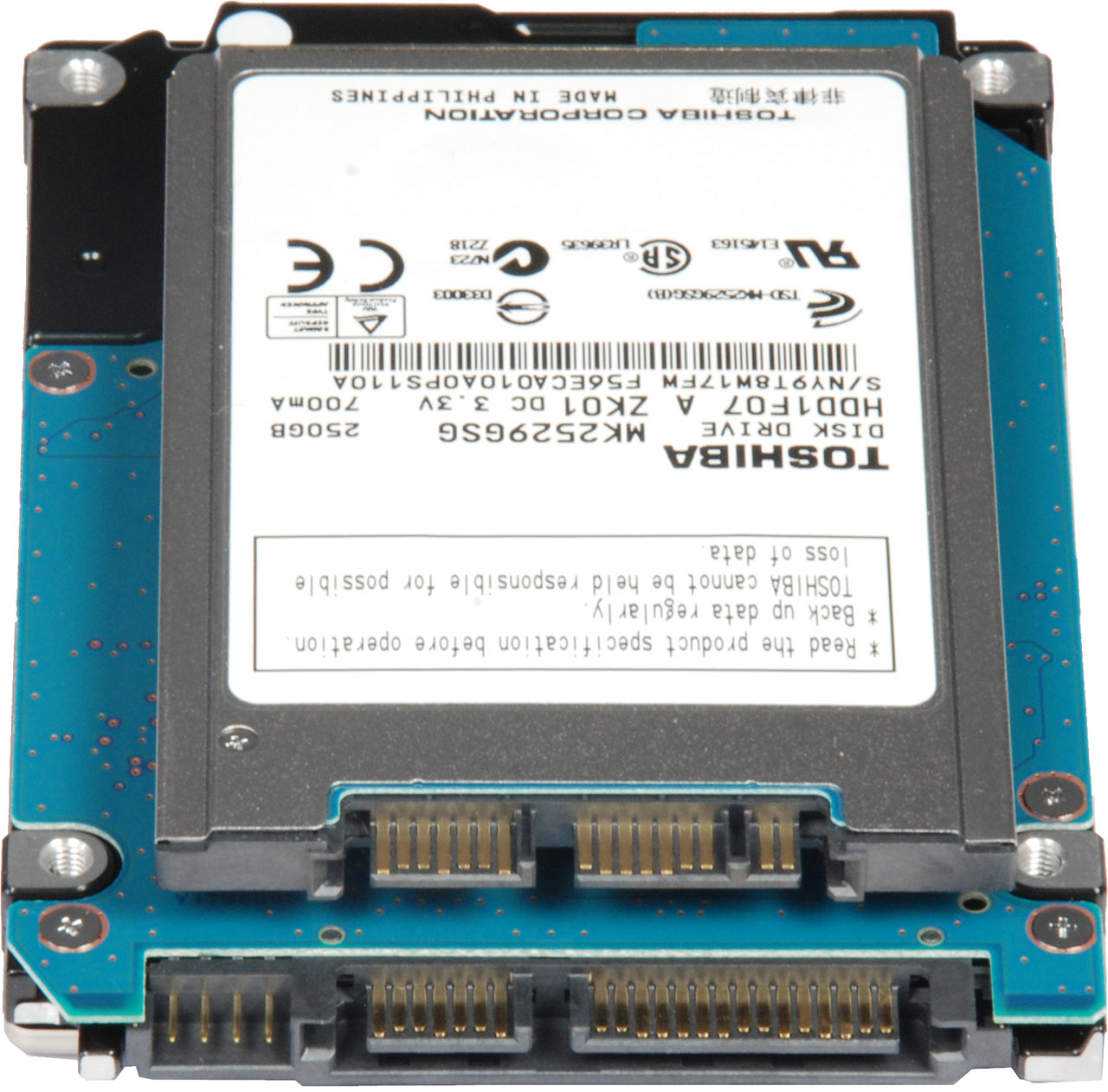Three Generations Of 1.8" Hard Drives Benchmarked
1.8” Drives In The Spotlight
Many people have already pronounced 1.8” hard drives dead. However, constant capacity growth ensures this small form factor remains at least somewhat attractive. Flash memory, which is the logical alternative to compact hard drives, is not yet capable of meeting the capacity demands in mainstream consumer markets. In order words, flash drives at capacities of several hundred gigabytes are still too expensive. We decided to look at three recent 1.8” product generations from Toshiba and look at where performance and efficiency are heading.
Who Uses 1.8” Drives Anyway?
The industry anticipated that storage for ultra portable notebooks and netbooks would increasingly be based on the 1.8” form factor. This is the case, but only in the high-end for ultra portable computers. Netbooks, which represent one of the fastest growing segments, turned flash down because it simply cannot yet satisfy the consumer’s capacity requirements at the price points that have to be reached for those cheap portable computers. Therefore, many netbooks are based on 2.5” drives today.
However, 1.8” hard drives are utilized for all sorts of ultra portable devices that have to combine both high capacity and attractive prices. This is the case for Apple’s iPod Classic, in addition to many other full-size, full-feature MP3 players, such as Microsoft’s Zune 80/120, Internet media devices like those from Archos and ultra mobile PCs (UMPCs). In addition, the 1.8” form factor has been quite popular for smallest size portable storage.
Some Facts
Hitachi had an 1.8” hard drive portfolio; Seagate offered its Lyrion 1.8” line for a while. However, both left the 1.8” market years ago. WD never even tried. Right now only Samsung and Toshiba remain active in this segment, Samsung focusing on retail products and Toshiba addressing the market opportunities mentioned above.
Earlier 1.8” hard drive generations from various manufacturers operated at 3,600 or 4,200 RPM, which didn’t deliver particularly impressive performance. Samsung and Toshiba accelerated their products to 5,400 RPM at the time when ATA interfaces using ZIF connectors were replaced by Serial ATA. Most of the current 1.8” hard drives are based on SATA 3 Gb/s interfaces with Micro SATA connectors. Performance of 1.8” hard drives can’t keep pace with 2.5” or 3.5” models of course, but in exchange, the drives are robust, very quiet, and considerably smaller.
Get Tom's Hardware's best news and in-depth reviews, straight to your inbox.
Analysis: Three Product Generations
We grabbed three different 1.8” drives from Toshiba to perform a little analysis on performance and power efficiency: a 160GB MK1617GSG from 2008, the 250GB MK2529GSG from late 2008, and the newest MK3233GSG at 320GB, which has been available only for a few months.
Current page: 1.8” Drives In The Spotlight
Next Page 160GB: MK1617GSG (2008)
